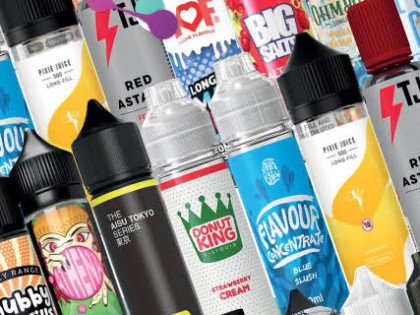The Californian/Australian study sets out the potential for harm at the beginning of the paper by selectively choosing studies to cite. “E-liquids have been shown to cause a widening range of effects beyond toxicity in cells, animal models, and humans,” they write. They illustrate the bias in the work by adding that eliquid is available in “entertaining, fruity, and sweet flavours” that makes them “more attractive to youth” and pose “a possible gateway to smoking”.
Team member Laura Crotty Alexander said: “Ninety-nine percent of e-cigarette liquids are flavoured. To create these flavour profiles, companies are adding multiple chemicals to achieve that 'perfect' taste. These chemicals have been found to be toxic to the lungs. When inhaled, they wreak havoc on the lungs and affect specialized protein levels that help keep the body's immune system on track.”
The team conveniently ignored that the protein they measured is not a unique response to vaping but to anything entering the lungs. They failed to relate their findings to tobacco use and the benefit of smoking cessation through switching to vaping.
They call for a restriction to simple, single flavours for eliquids.
South Florida’s group conveniently thinks “there was a 75% increase in ENDS use by high school students”.
“The health effects and particularly the cardiac toxicity of [vaping] remain incompletely understood,” and rather than measuring cardiac response to vaping over time in actual humans they decided they’d get better results from drowning cells in a petri dish and suffocating mice.
Ten, five-month-old mice were treated to vapour from a Smok Baby for 4.7 seconds every two minutes for two hours – for five days a week. For ten weeks! They ‘discovered’ mice exposed to vaping were more prone to an abnormal and dangerous heart rhythm disturbance.
The study’s principal investigator Sami Noujaim said: “Our findings in the cells and mice indicate that vaping does interfere with the normal functioning of the heart and can potentially lead to cardiac rhythm disturbances.”
It doesn’t take a scientist to work out that this is far in excess of how a vaper would use their equipment let alone subjecting this regime to a much smaller animal’s lung and heart.
Related:
- “E-cigarettes and health risks: more to the flavour than just the name” by Ween et al. – [link]
- “In vitro and in vivo cardiac toxicity of flavored electronic nicotine delivery systems” by Noukaim et al. – [link]
Photo Credit:
Image by Francine Sreca from Pixabay
Dave Cross
Journalist at POTVDave is a freelance writer; with articles on music, motorbikes, football, pop-science, vaping and tobacco harm reduction in Sounds, Melody Maker, UBG, AWoL, Bike, When Saturday Comes, Vape News Magazine, and syndicated across the Johnston Press group. He was published in an anthology of “Greatest Football Writing”, but still believes this was a mistake. Dave contributes sketches to comedy shows and used to co-host a radio sketch show. He’s worked with numerous start-ups to develop content for their websites.
Join the discussion
Australia Burns
Australia is providing a shocking vision of how things could be in the UK if it continues down a prohibitionist road for vaping and vape products with violence and firebombings
Vape Protection Alliance: Fundraising To Fight Government
Vape businesses are coming together to fundraise £75,000 in order to challenge the government’s threat to vaping and vape flavours
Longfills as an Alternative to Disposables
The disposable vape ban will impact many people, but there’s no reason to be concerned… Grab yourself a pod kit and a Longfill and you’ll be back to vaping the way you want to, just in a cheaper, more environmentally friendly and legal way.
All Change As Industry Under Scrutiny
Despite vapers telling the industry it needed to act, intransigence resulting from over confidence has led to the entire sector being placed on notice of legislation












